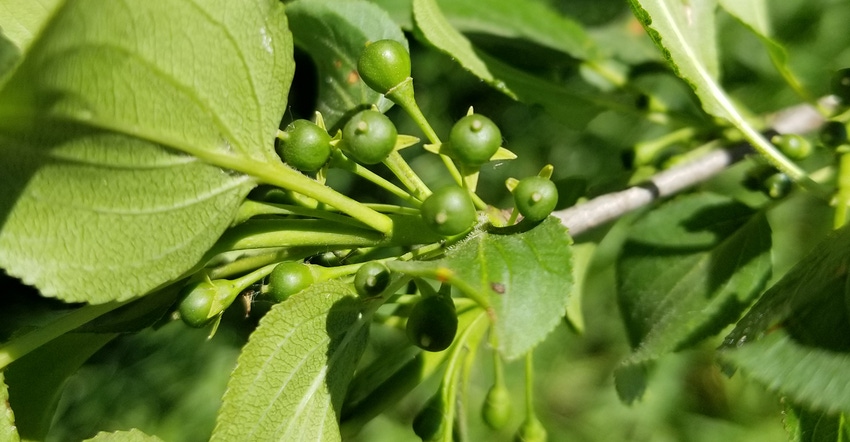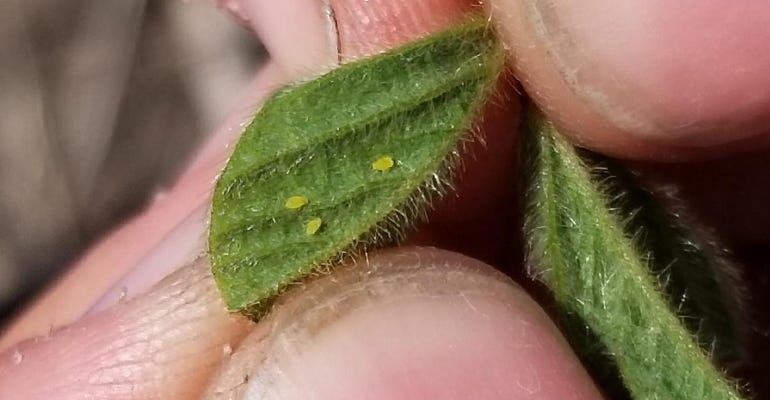
If you’re seeing berries on female buckthorn, it would be a smart move to start checking volunteer soybean plants for aphids.
Bruce Potter, University of Minnesota Extension IPM, Lamberton, noted in a recent IPM e-newsletter that scientists found aphid nymphs on volunteer soybeans at the Southwest Research and Outreach Center.
“Each spring, we spend some time checking buckthorn and early emerging soybean for soybean aphids,” he wrote. “Our efforts finding spring soybean aphid populations on buckthorn consistently fails. On the other hand, as they leave buckthorn, we usually can usually find winged females and newly deposited nymphs on the largest soybeans, including volunteer soybeans plants. On June 7, a sharp-eyed intern found new soybean aphid nymphs on a volunteer soybean plant.”
Scientists had looked for aphids on SWROC buckthorn last fall and did not find any. However, at least a few aphids were there, reproduced and survived the winter, Potter noted.
Farmers usually see aphid nymphs in late June, once populations on soybeans build up. They live for a few days when weather is warm to a couple weeks if weather is cool. Potter said pockets of nymphs with large numbers occur on a few adjacent plants and then they eventually disperse.
Volunteer soybeans are numerous in many fields, Potter said.
“Depending on herbicide tolerance of the previous year’s soybean crop and corn herbicide selection, these volunteers can persist in corn,” he said. “Minnesota Soybean checkoff-funded research has shown that when colonized, volunteer plants in corn can produce significant numbers of soybean aphids to move to soybean fields later.”
Still, Potter said it’s difficult to predict what soybean aphid infestations will be like this summer.
“A lot will depend on how well they do on colonizing soybean,” he added.
Potter encourages farmers to scout and would appreciate hearing from them about whether or not they are seeing soybean aphids. That will help him and other researchers begin the process of assessing soybean aphid risk for 2019.

APHID CHECK: A sharp-eyed intern at the U-M Southwest Outreach and Research Center found soybean aphid nymphs on a volunteer soybean plant.

He suggests that farmers start scouting early around mid-to late-June, and then intensifying their scouting efforts after 4th of July. Scouting is easier to do when plants are in the vegetative and early reproductive stages, as most aphids are near the top of the plant.
Usually, scouting is done by the third week of August or R6 stage soybeans.
“Scouting might need to run a bit later this year because of later planting,” he said. “We typically see a lot of movement of winged aphids in late July to early August and new fields get infested then.”
Share your scouting reports with Potter at [email protected] or call him at 507-752-5066.
About the Author(s)
You May Also Like






